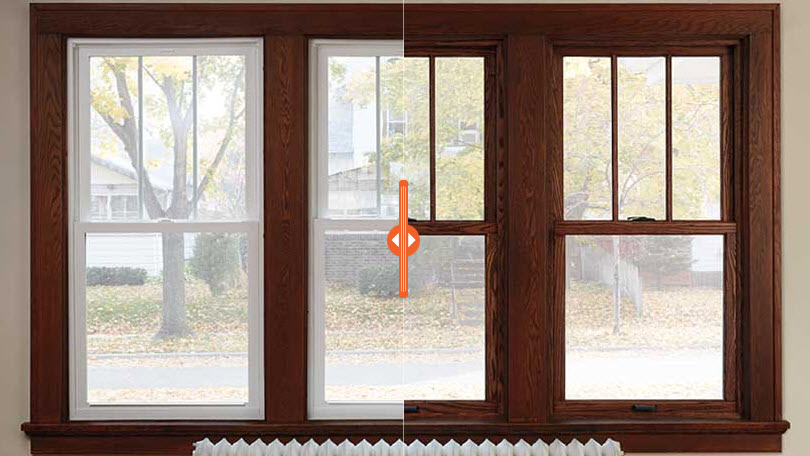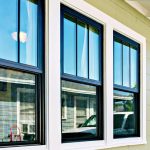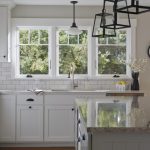With more than 150,000 housing units built before 1916, the Twin Cities has one of the oldest housing stocks in the country. Older homes require routine maintenance and sometimes intimidating upkeep. Home improvement projects on historic properties often present a higher degree of difficulty due to the nature of original construction. We have to be mindful of framing style (balloon framing was common before 1920), existing decomposition (rot), and present-day code requirements.
Most people living in historic homes have an appreciation for the importance of preservation when attacking problems and deterioration with remodeling projects. Many homes we visit have homeowners with big hearts for their homes, but they are often faced with an extensive and ever-growing list of projects to complete. Based on the architectural style of their home and the severity of the problems they are experiencing, we try to offer ideas for projects that make sense for each specific situation. Because our specialty at Great Plains Windows and Doors is window repair and replacement services, we focus on that aspect most closely, yet we’re still architectural buffs and love to take a look at older homes generally.
The most common historic homeowners we encounter are weighing options between repairing their existing windows (including storm windows) or replacing the existing windows. We want to help explain some of the pluses and minuses of each option.
While we don’t do complete window restorations, we can recommend the best solution for your specific situation.
HISTORIC WINDOW REPAIR AND REPLACEMENT PROCESSES
There is a lot of information aggregating on the internet about Historic Window Preservation. The standard response window replacement requests from many preservation or historic commissions has been against replacement. With the flooding of the window replacement market with vinyl windows in the 80’s, came a tendency towards quick fixes and band-aid remodeling that completely ignored architecturally significant styling. The invention of the replacement window required a lot of innovation to adapt the new product availability with the direct replacement needs. Originally, replacement windows were actually converted builder grade windows. It wasn’t until the 90’s when companies like Andersen Windows “Renewal by Andersen” and Marvin Windows “Integrity” and “Infinity” introduced replacement specific options with architectural integrity.
For homes more than a century old, the original windows were assembled on site and were essentially devoid of any weatherstripping. Wood frames, wood sashes, and an anchor-line pulley system to allow operation. As fenestration manufacturing improved, windows were equipped with storm windows to add protection from wind and rain while providing increased thermal performance.
When repairing windows in older homes, the process involves removing the old sashes and storm. In many cases the storm is simply replaced due to poor condition. The sashes are stripped of paint (often lead-based paint) and reconditioned with repairs to rotten or weak wood. Damaged glass is replaced. Weatherstripping is added. Window components including sash weight lines and locks and lifts. Then a new storm window is added to the exterior to enhance thermal performance.
When replacing a window from this era, the old window sashes, storms, and a window stop is removed. A custom-made, complete window unit is placed in the opening. The unit is insulated and then stops are replaced to complete the installation.
In both cases, the window trim is left in place. Many historic documents suggest that a preserved window with a storm window has nearly equal thermal performance qualities to a replacement window unit. It is interesting that many of these publications take no exception to the placement of an aluminum storm window disguising a costly window restoration project. Here a table explaining some of the features and drawbacks of different historic repair/replacement options.
| Repair | Vinyl Replacement | Architectural Replacement | |||
| Storm Window | Yes | No | No | ||
| Full Screen | Maybe | Maybe | Yes | ||
| Weatherstripping | Sometimes | Yes | Yes | ||
| Tilt-In | No | Yes | Yes | ||
| Insulated Glass | No | Yes | Yes | ||
| Real Wood | Yes | No | Yes | ||
| Warranty | No | Yes | Yes |
WINDOW REPLACEMENT VS RESTORATION COSTS
The major points driving window “repair” or “restoration” as the prevailing recommendation to address many historic window projects are based on 2 misunderstandings.
- That it’s easy to find someone to restore your windows
- That it’s less expensive to repair than replace
Because we’ve tried to assuage requests to take a repair approach for many projects, we know how hard it is to find someone to do the repairs necessary to restore a historic property. We also know a lot about the cost. We always hear that replacing windows is really expensive. But what we’ve actually seen is that repairing an historic window and adding a storm window can range from 70-130% the cost of replacing a window. That’s right – it could actually cost you more to repair a window than replace one.
EXAMPLE 1
Here’s a link to a detailed blog post that walks through the repair process. Interestingly, the restorer explains that the project was a true bargain at only $400 in supplies. He fails to mention the 99 steps and “well over 200 hours of work” to completion. This is for 11 windows and didn’t include any energy efficiency improvements or storm windows.
200 hours / 11 windows = 18 hours per window
18 hours per window x $75/hour = $1,350 in labor per window
EXAMPLE 2
Another example of the hidden expense of restoration is here. This project restored a total of 21 windows at a cost of more than $51,000.
HISTORIC WINDOWS VS REPLACEMENT APPEARANCE
Another major sticking point when approaching a repair vs replacement project is the final appearance. Many homeowners want the windows to “fit in” with the overall look of the home. Many historic documents suggest that replacement windows can’t match existing windows because of the exterior appearance. This opinion is really directed at major vinyl window manufacturer’s whose windows don’t fit into historic project scope. Here’s a side-by-side comparison of replacement vinyl windows with an architecturally significant wood replacement window from Andersen Windows.

Andersen Architectural Series Wood Windows vs Vinyl Replacement
By selecting a top-performing and historically accurate window from Andersen or Marvin, you’ll actually get near-original appearance with tremendous added functionality. Some of the added features new wood replacement windows have are:
- Full Screens
- No Storm Windows Needed
- Tilt-In for Easy Cleaning
- Unlimited Color Options (painting or staining required)
- Insulation and Energy Efficiency
SUMMARY
While there are many options to weigh when approaching a window home improvement project, we hope we’ve been able to increase some of the awareness about misconceptions regarding historic replacement. If there were an easy way to repair everything in our homes, we’d love that as an option. But due to the nature of aging wood and advancements in fenestration technology, we’re now at a point where there are several options for historic renovations that are accurate. If you are wondering what to do with your historic windows in the Twin Cities area, please invite us out to get an extra set of eyes on the project and offer any suggestions.
For historic replacement options from Andersen Windows view this link.
ABOUT US
At Great Plains Windows and Doors, We are all Andersen, All the time. And we’re the only ones doing it this way. Come see what we have to offer.
If you need some help looking at a patio door and evaluating it or coming up with a replacement patio door solution in St. Paul or Minneapolis, look no further than Great Plains Windows and Doors. Our residential window experts are here to help. Find out more at www.GreatPlainsWindows.com or call us today at 651-207-4571.







